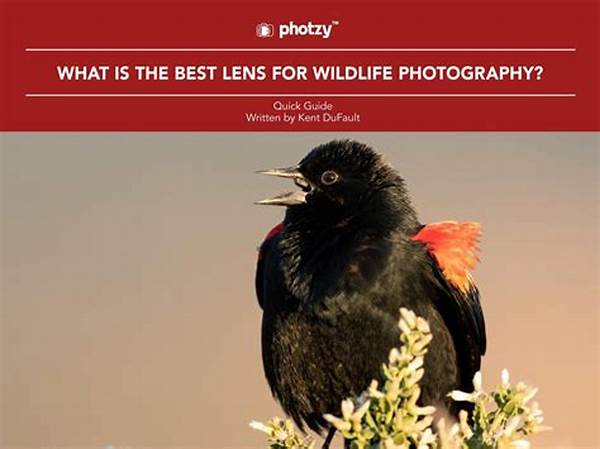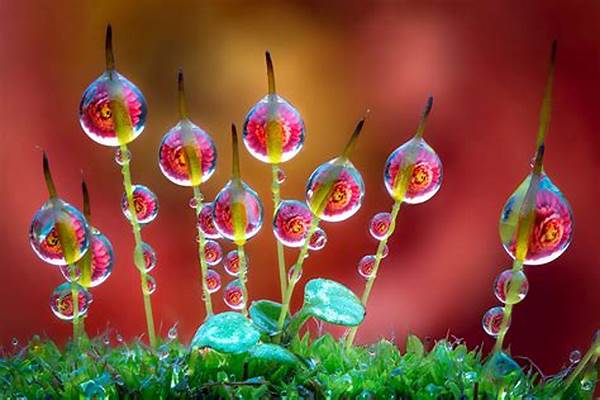Hey there, wildlife photography enthusiasts! Diving into the world of capturing those majestic creatures in their natural habitat can be an exhilarating experience. But, let’s face it, choosing the right lens can sometimes feel like navigating a jungle in itself. Don’t worry, though! We’re here to break it down for you in a super chill way and help you make the best choice for your wildlife treasure hunt. So, grab your coffee (or tea!), and let’s chat about selecting lens for wildlife shots.
Read Now : Mastering Natural Light In Forests
What to Look for in a Wildlife Lens
When it comes to selecting lens for wildlife shots, there are a few key features you should think about. First up, consider the focal length. A longer focal length, like 300mm or more, allows you to capture distant animals without disturbing them—or, you know, getting too close to something that might consider you lunch.
Next, let’s talk about image stabilization. Wildlife doesn’t usually sit still for long (unless you’re super lucky!), so having a lens with good image stabilization can make a world of difference when shooting those fast-moving scenes in low light. Lastly, pay attention to lens sharpness. While some photographers live for the challenge of post-processing, starting with sharp images means you’ll get better results and more detail right off the bat. These are just a few pointers to set you on the right path to selecting lens for wildlife shots.
Now, consider the weight and build quality. You don’t want to be lugging around a heavy lens all day, especially if you’re trekking through the woods. A durable, lightweight design can be a lifesaver. Plus, weather sealing can’t be ignored since nature is as unpredictable as can be! With all these features combined, you’re on the right track in selecting lens for wildlife shots that will let you focus on what truly matters—the mesmerizing beauty of the wild.
Top Picks for Wildlife Photography Lenses
1. Nikon AF-S NIKKOR 200-500mm f/5.6E ED VR – A great choice for long-distance shots with impressive stabilization.
2. Canon EF 100-400mm f/4.5-5.6L IS II USM – This versatile choice is perfect when selecting lens for wildlife shots.
3. Sony FE 200-600mm f/5.6-6.3 G OSS – Offers superb reach with the added bonus of sharp, clear images.
4. Tamron SP 150-600mm f/5-6.3 Di VC USD – A budget-friendly option that doesn’t skimp on quality.
5. Sigma 150-600mm f/5-6.3 DG OS HSM – A reliable all-rounder when selecting lens for wildlife shots.
Why Focal Length Matters
Focal length is a big deal when selecting lens for wildlife shots. Why? Because it affects how close you can get to your subject without actually getting closer. Long focal lengths, like 400mm or 600mm, are ideal because they allow you to keep your distance—essential when photographing skittish animals or dangerous predators.
Having the ability to zoom in on a subject enables you to focus on details and capture candid moments without disturbing the scene. With a versatile zoom lens, you can switch from capturing sweeping landscapes to intimate shots of wildlife in action quickly. This flexibility is priceless, especially if you’re on a safari or hiking through varied terrains. So, when selecting lens for wildlife shots, keep focal length top of mind.
But remember, more zoom means the lens can be heavier and pricier. Having a clear idea of your needs and how you’ll be using your lens can help you strike the right balance. A versatile lens might just be what you need if you’re still exploring your style in wildlife photography. So, invest wisely when selecting lens for wildlife shots!
Mistakes to Avoid in Lens Selection
1. Ignoring lens weight. – It’s crucial for comfort during long shoots!
2. Overlooking image stabilization. – Vital for crisp images without blur.
3. Choosing a non-weather sealed lens. – Not ideal for unpredictable wildlife environments.
4. Underestimating focal length requirements. – Longer is usually better.
5. Skipping research on lens sharpness. – Essential for detailed shots.
Read Now : Portrait Photography Focus Tips
6. Neglecting your budget. – Expensive isn’t always better.
7. Failing to consider compatibility with your camera. – Make certain your lens fits.
8. Forgetting the need for low-light capability. – Wildlife often appears at dusk or dawn.
9. Overlooking warranty and build quality. – You want your lens to last.
10. Neglecting to seek advice from seasoned photographers. – They’ve navigated these waters before.
Zoom vs. Prime Lenses for Wildlife Photography
Let’s dig deeper into the zoom vs. prime debate, especially when we’re focusing on selecting lens for wildlife shots. Zoom lenses offer versatility and adaptability, which can be essential in the ever-changing world of nature photography. You can adjust your frame on the fly, switching from wide landscapes to intimate animal portraits in a snap.
On the flip side, prime lenses, while offering tack-sharp images with their fixed focal length, force you to be more intentional with your framing and composition. This can lead to some stunning shots if you’re up for the challenge. However, you may find yourself swapping lenses more frequently, which could mean missing a perfect shot.
In terms of affordability, zoom lenses can sometimes be more budget-friendly since you’re essentially getting multiple focal lengths in one. If you’re just starting out and exploring selecting lens for wildlife shots, a versatile zoom might be your best bet. However, seasoned pros often carry both types, using each when the situation demands. So, ask yourself: Do you value flexibility over superb image quality with a single focal length? Your answer will steer you toward the perfect choice.
The Importance of Aperture in Wildlife Lenses
Alright, let’s chill for a second and talk apertures—oh, and don’t sweat it if you’re still a bit green. Selecting lens for wildlife shots can get totally overwhelming, but catching that perfect light is gold! So, aperture? Think of it like the lens’s peep hole. Wider openings (like f/2.8) can seriously kill it in low light, helping you snap detailed shots even when it’s kinda dusky out there.
Narrower apertures (like f/5.6 and higher) are more forgiving if you’re on a budget but they might not pounce on details as well in low light. Still, they let you play around with depth of field, so your subject pops against those lush backgrounds. Totally dreamy, right? Our aim here while selecting lens for wildlife shots is finding that sweet spot between gorgeous bokeh and crispy clarity! Once you get the hang of it, trust me, you won’t regret diving a bit deeper—it’s all part of the game when chasing those wildlife wonders!
Wrapping it Up: A Lens to Capture the Wild
Selecting lens for wildlife shots is like picking the perfect travel buddy—trustworthy, reliable, and ready for the adventure. With so many aspects to consider, from focal length to aperture, making a thoughtful choice can elevate your photography game. Remember, it’s not about having the fanciest gear, but having the right tool that feels like an extension of your adventure spirit.
Investing in equipment that suits your needs means more memorable captures, from that split-second leap of a deer to a bird taking flight. As you grow in your wildlife photography journey, your understanding of what you need will change—it’s all part of honing your craft! So, start with what fits your current skill level and grow from there.
Lastly, seek out advice from other wildlife photographers and learn from their experiences. They’ve been there before and can offer invaluable insights into selecting lens for wildlife shots. Photography is a journey, and every shot you take is part of your story. So, let’s get out there and capture the wild, one frame at a time!



